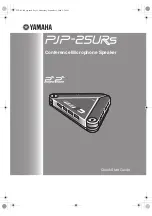
6
D
7
7
EN
1. Introduction
This manual contains essential information for the
operation and care of the microphone you have
purchased. Please read the instructions carefully
and completely before using the product. Please
keep this manual where it will be accessible at all
times to all current and future users.
Additional information, in particular concern-
ing available accessories and Neumann service
partners, can be found on our website: www.neu-
mann.com. Information about service partners
can also be obtained by telephone: +49 (0) 30 /
41 77 24 - 0.
The following related fi les are available in PDF
format in the Downloads section of our website
www.neumann.com:
Some Remarks on Microphone Maintenance
DMI-2 Digital Microphone Interface Operating
Manual
RCS Remote Control Software Operating Man-
ual
Connection Kit Operating Manual
Short description of the AES 42 standard
Additional information concerning the digital
microphone interface can be found in standard
AES 42 on the website: www.aes.org/standards
“AES standards for acoustics, Digital interface for
microphones”.
Our Neumann online forum enables Neumann
users worldwide to share their experiences.
Through its integrated archive function, the forum
has developed into an extensive knowledge pool.
2. Safety instructions
The microphone has the intended purpose of
converting acoustic signals into digital electrical
signals.
Connect the microphone only to microphone
inputs and to equipment which supplies phan-
tom power in accordance with AES 42.
But the microphone will not be damaged if it is
accidentally connected to an analog microphone
input with a phantom power of 48 V for a short
period. The TLM 103 D has overvoltage protection
and can handle a voltage of up to +55 V for a short
period.
•
•
•
•
•
Repairs and servicing are to be carried out only
by experienced, authorized service personnel.
Unauthorized opening or modifi cation of the
microphone shall void the warranty.
Use the microphone only under the conditions
described in the Technical Data.
Allow the microphone to adapt to the ambient
temperature before switching it on.
Do not operate the microphone in a damaged
condition.
Always run cables in such a way that there is no
risk of tripping over them.
Ensure that liquids are kept at a safe distance
from the microphone and its connections.
Do not use solvents or aggressive cleansers for
cleaning purposes.
Dispose of the microphone in accordance with
the regulations applicable to the respective
country.
3. Description
The TLM 103 D is a condenser studio microphone
with a cardioid directional characteristic and a
digital output that complies with the standard
AES 42. Based upon the usual AES 3 (AES/EBU)
standard for digital audio signals in studio equip-
ment, this standard has been extended to include
phantom power for the microphone, remote con-
trol and synchronization data, and user bits for
the transmission of microphone information.
The microphone houses a large diaphragm cap-
sule. It has a linear frequency response up to ap-
proximately 5 kHz, above which there is a broad,
fl at presence boost.
The microphone features exceptionally clean
sound transmission which is free of coloration,
with very low self-noise and an extensive dynamic
range. Digitization is performed by an A/D con-
version process developed and patented by Neu-
mann. This ensures that the full dynamic range
of the capsule signal is transferred to the digital
realm. The integrated digital signal processing
also permits functions to be provided which were
previously available only via the mixing console
or additional studio equipment. These functions
are described in the “Technical data” section.
If there is no microphone input according to
AES 42 standard available Neumann provides
Connection Kits for the simple supply of power, as
•
•
•
•
•
•
•
•
8. Lieferumfang
Mikrophon
Starter-Set
Mikrophon TLM 103 D (mt)
Mikrophon TLM 103 D
Stativgelenk SG 1
Elastische Aufhängung EA 1
Bedienungsanleitung
Connection Kit
Holzetui
Bedienungsanleitung
9. Fehlercheckliste
Fehler
▶
Mögliche Ursachen
▶
Abhilfe
Keine
Funktion /
Keine Signal-
übertragung
Speisespannung fehlt
Überprüfen Sie das Speisegerät und ggf. die
zugehörigen Software-Einstellungen
(RCS -> System -> MicPWR).
Das Mikrophon ist nicht mit
einem AES 42-Eingang verbunden
Verwenden Sie einen AES 42–Eingang.
Das Mikrophon ist nicht mit dem
richtigen Kanal verbunden
Überprüfen Sie den Signalweg.
Aktivieren Sie ggf. den entsprechenden Eingang auf
dem zugeordneten Kanalzug des Mischpults.
Der Kanal ist gemutet
Deaktivieren Sie in der AES 42-Fernsteuerung Mute.
Ton verzerrt /
schlechte
Signalqualität
Zu hohe Schalldrücke im
aufzunehmenden Tonsignal
Vergrößern Sie den Aufnahmeabstand oder aktivieren
Sie die Vordämpfung in Ihrer AES 42-Fernsteuerung.
Übersteuerung durch tief-
frequente Störgeräusche
(Trittschall, Wind)
Benutzen Sie einen geeigneten Windschutz (Zubehör).
Aktivieren Sie die Vordämpfung in Ihrer AES 42-Fern-
steuerung.
Übersteuerung durch Explosiv-
laute
Benutzen Sie einen geeigneten Popschutz (Zubehör).
Aktivieren Sie die Vordämpfung in Ihrer AES 42-Fern-
steuerung.
Ton klingt
dumpf, räumlich
Richtcharakteristik nicht
beachtet
Prüfen Sie, ob das Mikrophon von der richtigen Seite
angesprochen wird.
Orientieren Sie sich am Neumann-Logo.
Keine
Synchronisation
Asynchroner Betrieb ist
eingestellt
Wählen Sie den Synchronmode (Mode 2, RCS).
Sample Rate von Mikrophon und
Folgegerät stimmen nicht überein
Synchronisieren Sie den digitalen Eingang mit der
Quelle.
Verwenden Sie einen Sample-Rate-Converter.
Externer Word Clock wird
erkannt, aber liegt außerhalb der
Spezifi kation
Überprüfen Sie den externen Wordclock auf Genauig-
keit und Signalqualität (Jitter? Sehr lange Kabel?).
Alternative Abhilfe: Verwenden Sie den internen
DMI-Wordclock als Master Word Clock für die gesamte
Signalkette.


























